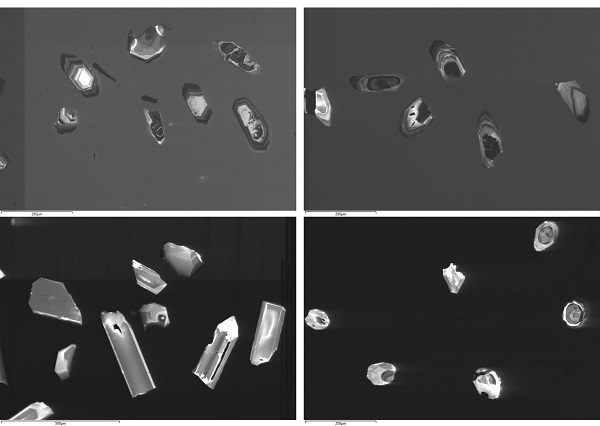Deben, a leading provider of in-situ testing stages together with innovative accessories and components for electron microscopy, reports on the use of a cathodoluminescence detector to understand structure of geological specimens collected in South East Asia by the research team of Professor Robert Hall of Royal Holloway University of London.

Professor Robert Hall leads field based research into the geology of South East Asia and the western Pacific. Samples of sedimentary rocks are brought back to the UK where they are analysed by heavy and light mineral analyses as well as uranium-lead (U-Pb) zircon geochronology for provenance studies and pathway reconstruction. Furthermore, magmatic and metamorphic basement rocks are dated to identify potential sources for provenance studies and to improve the understanding of the tectonic processes in the region. The results are also incorporated in paleogeographic reconstructions of SE Asia.
Team member, post-doctoral researcher Juliane Hennig, takes up the story. “A main aspect of our research involves heavy mineral separation using heavy liquids (LST, DIM) or a Wilfley table, as well as a Frantz Isodynamic separator. This includes extraction of zircons which are analysed by Laser Ablation Inductively Coupled Plasma Mass Spectrometry (LA-ICP-MS) U-Pb geochronology for age determination. Cathodoluminescence (CL) imaging is an important tool for us to evaluate the internal zircon structure prior to U-Pb analysis. It is used to select laser spot positions and allows us to specifically target an area of interest in the zircon. It can also help to detect possible inclusions or cracks. The CL images can reveal core and rim relationships indicating different growth episodes of the zircons which, in combination with age dating, can provide further insights into the history of the rock. It can also be used to support possible interpretations of the age results, such as oscillatory zoning which indicates a magmatic origin, or irregular convolute structures of zircons or rims which may suggest a metamorphic origin.” Furthermore team member Dr Amy Gough uses the CL detector for imaging of quartz. “Differentiation of volcanic and hydrothermal quartz aids the light mineral analysis for sedimentary provenance. It also allows us to determine which grains are detrital and have authigenic overgrowths. The CL detector can also help to unravel the history of the detrital quartz grains through highlighting both growth zoning and different generations of growth.”
The group chose the Centaurus CL detector from Deben based on previous experiences at Birkbeck College/UCL. It has provided very good results and high quality images from the scanning electron microscope (SEM).
Dr Hennig
Examples of the work are shown below. For further information, readers are recommend to look at recent publications1,2 noted in the reference section below.
The Deben Centaurus is capable of producing high resolution cathodoluminescent (CL) images of luminescent materials. Using a user exchangeable diamond turned reflector tip, monochrome CL images can be easily collected and fed back into the SEM auxiliary video input. The photomultiplier may also be exchanged to select a particular wavelength range with sensitivity available from UV to deep IR at 185 nm to 1200 nm. For more details of how Deben helps customers to solve experimental challenges, develop a special configuration or to obtain more information on Deben’s applications and product portfolio, please visit www.deben.co.uk